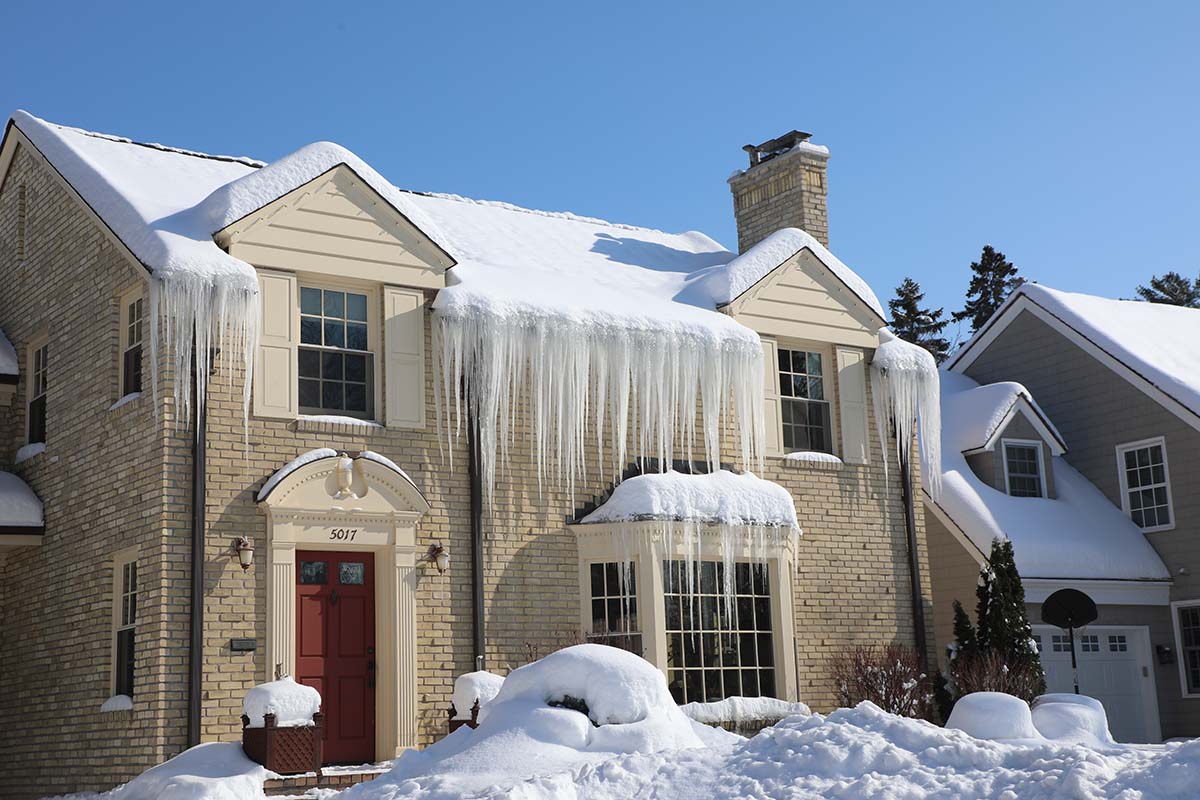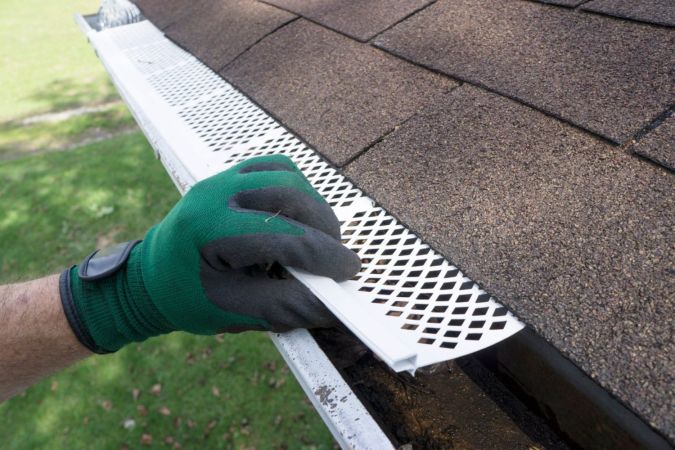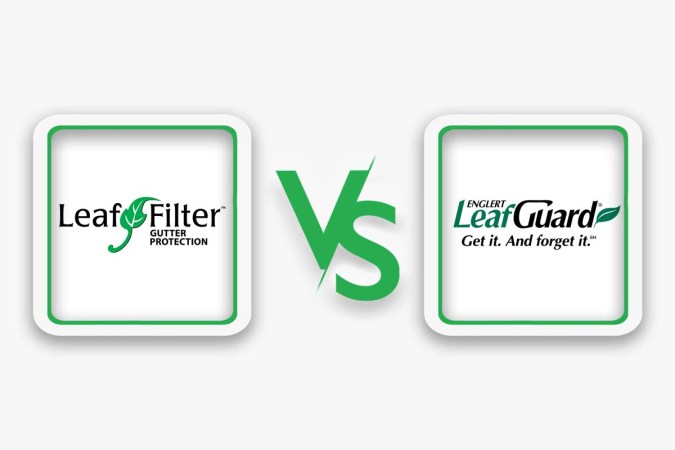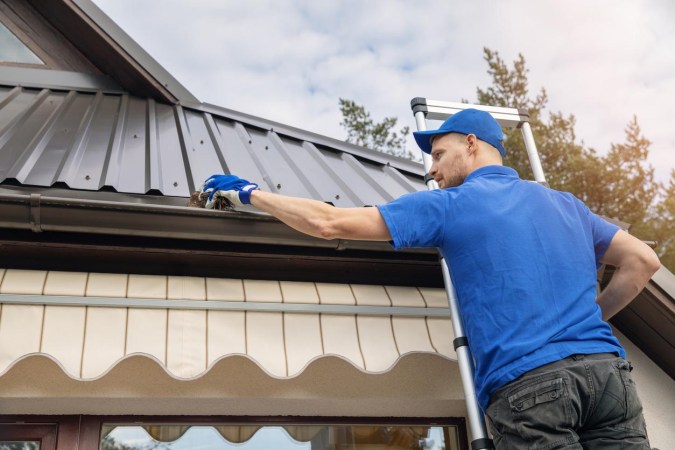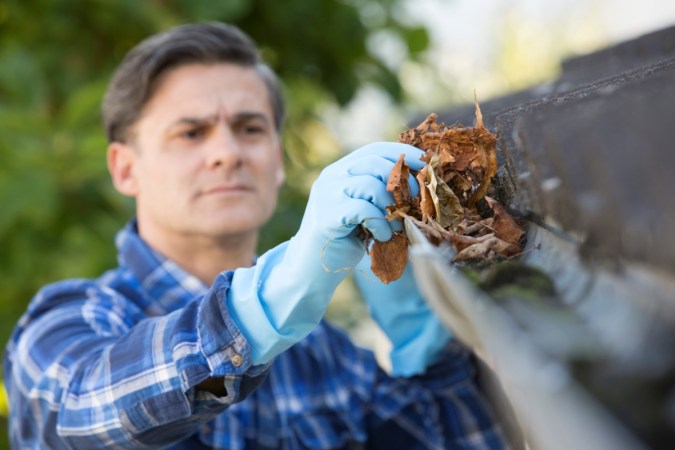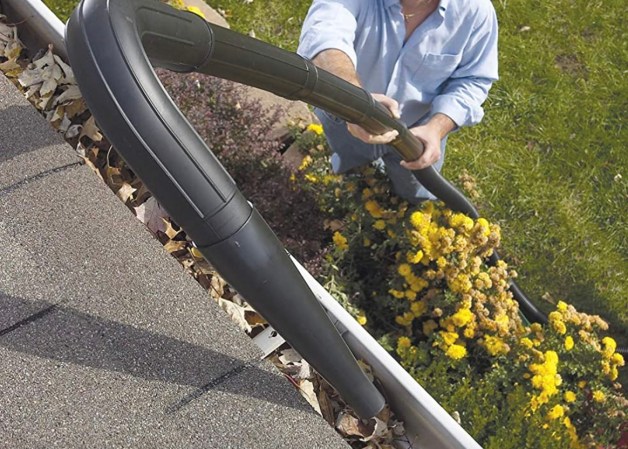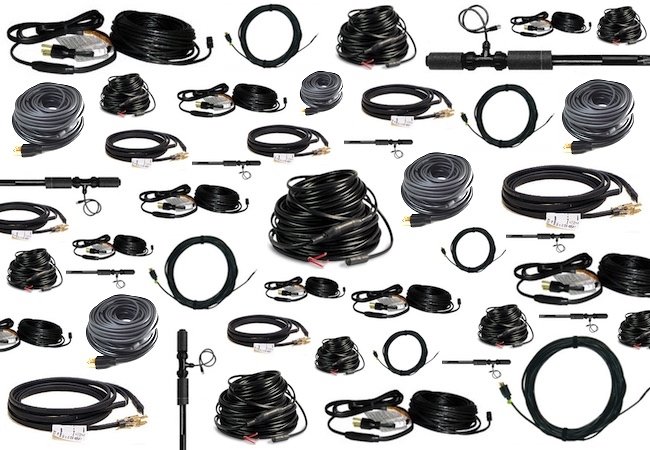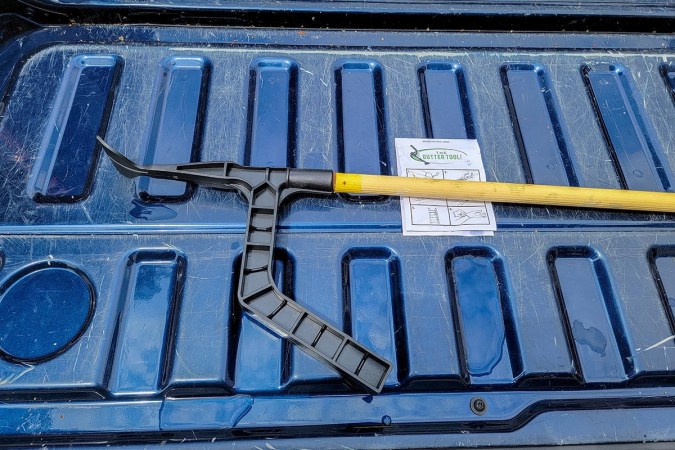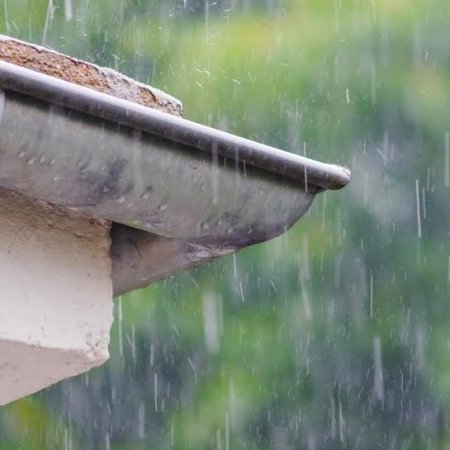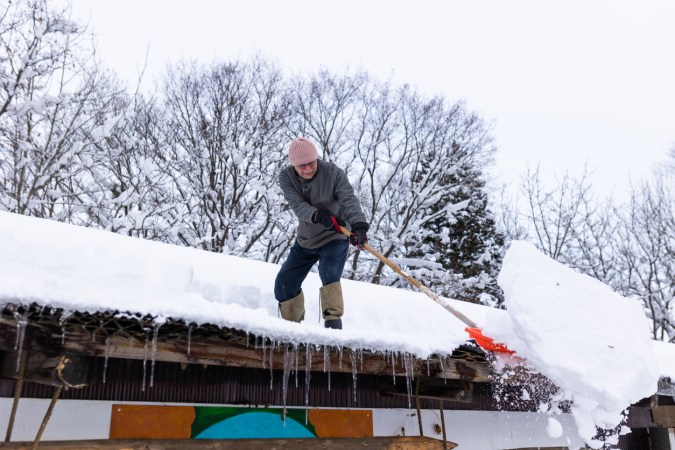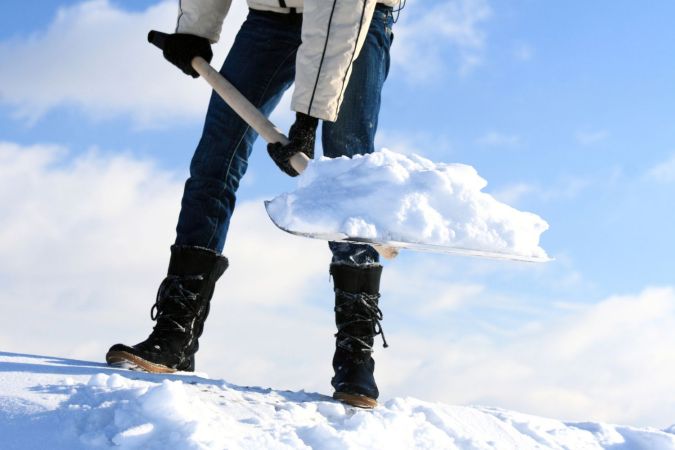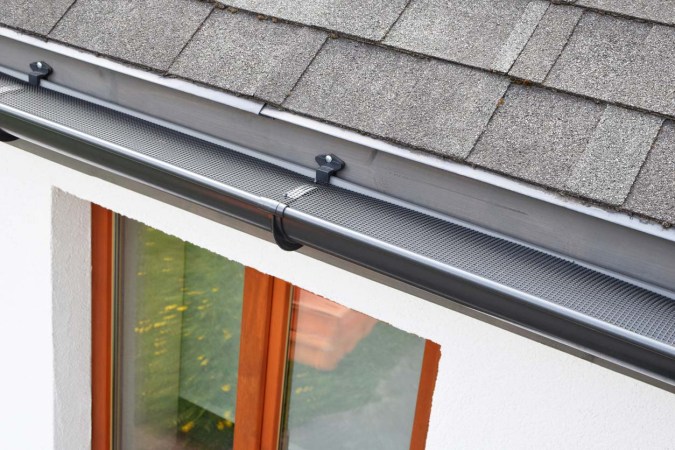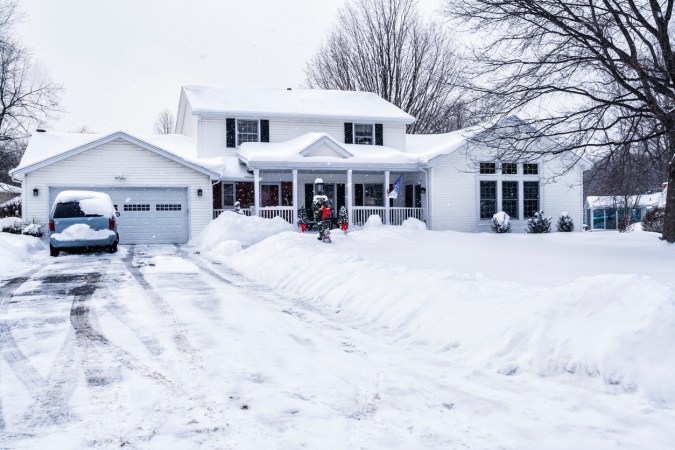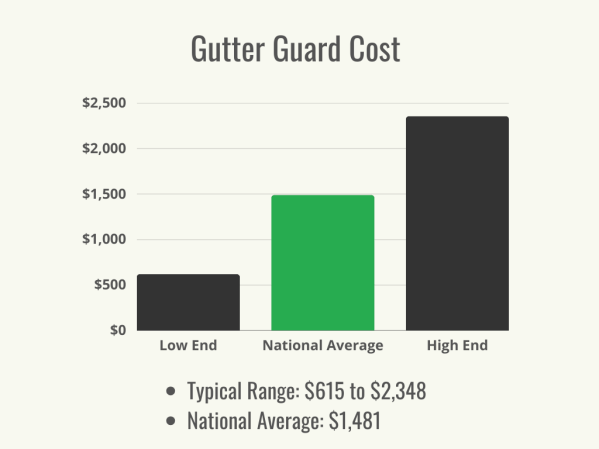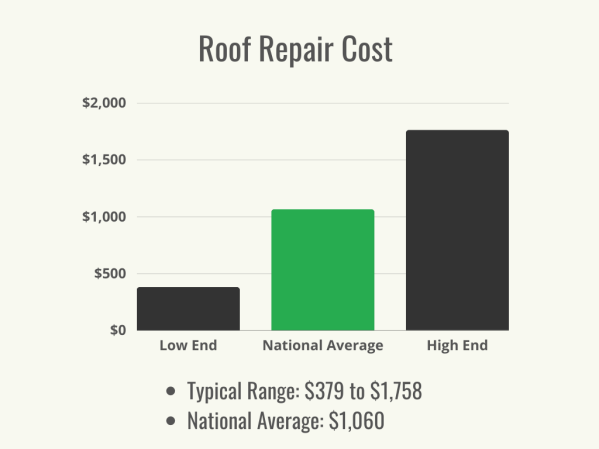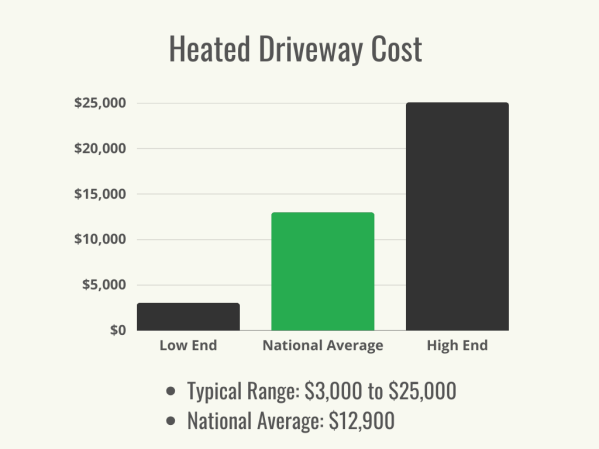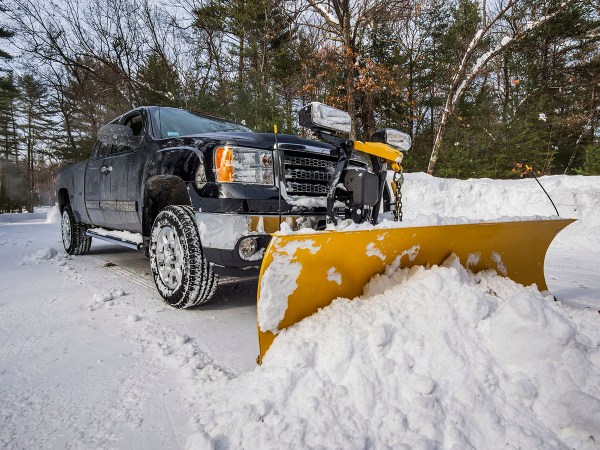We may earn revenue from the products available on this page and participate in affiliate programs. Learn More ›
Q: After a recent snowstorm, a large band of ice formed above the edge of my roof and created some heavy icicles as well. The weight of the ice is starting to pull the gutter loose, and I’m afraid it will pull it off entirely. Is there anything I can do to get rid of the ice before it tears up the gutter or falls on someone?
A: What you’re describing is an ice dam, and, unfortunately, it’s very common on homes in areas that experience cold and snowy winters. An ice dam results from snow that melts and then refreezes—known as a freeze-thaw cycle—and the culprit is an abnormally warm roof. Not only can this result in a damaged roof or gutter system, but “[ice dams] cause millions of dollars of water damage every year,” says Steve Kuhl, owner and CEO of the Ice Dam Company and Radiant Solutions Company. Ice dams are most common on asphalt shingle roofs, but they can also form on other roofing materials, especially if the roof is flat.
Fortunately, there are both permanent and temporary solutions for an ice dam roof problem. Ice dams are not typically a one-time event, so homeowners will want to also consider taking measures to prevent ice dams in the future. Read on to learn why ice dams form and what to do about them.
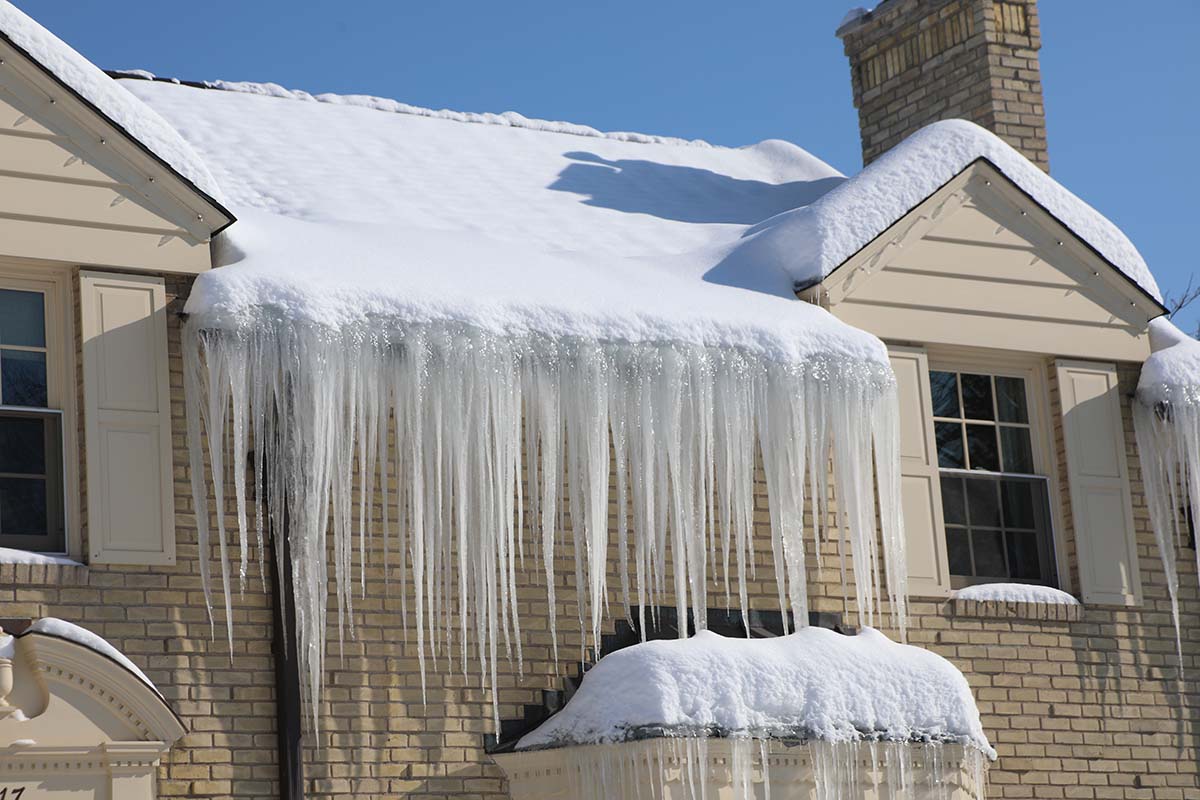
What is an ice dam?
Ice damming is the accumulation of frozen water that collects at the edge of a roof after it snows. When the air inside an attic is warm, that warmth can transfer through the roof and begin to melt the layer of snow, which in turn causes droplets to run down the roof. When those droplets reach the edge of the roof, they refreeze because the part of the roof above the overhang (the eaves) doesn’t receive warm air from the attic.
As additional snow melts, runs down, and refreezes, the layer of ice continues to build, creating a literal dam—a barrier that prevents water from running off the roof. Ice dams, and the inevitable icicles that result from them, might make one’s home look like a gingerbread house, but be warned: They are a hazard. Failing to remove icicles is one of the biggest mistakes homeowners make every winter.
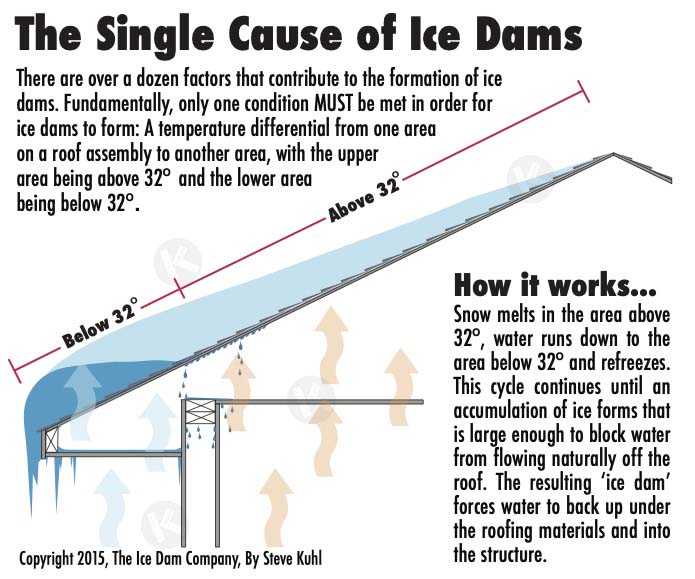
Dangers of Ice Dams
It may be tempting to ignore ice dams—after all, it’s easy to assume that the problem will resolve itself as the weather warms up and the snow begins to melt. However, ice dams pose significant risks to the home and its inhabitants if they are not dealt with properly.
- Gutter damage: As ice dams develop and grow, they get heavier. When the weather warms enough for the ice to melt, the dam can loosen enough to come crashing to the ground—sometimes taking the home’s gutter with it and leading to potentially expensive gutter repair costs.
- Roof damage: As water seeps between shingles and freezes, it expands, loosening the shingles and penetrating through the layers of the roof. Roof repairs cost just over $1,000 on average, and if the damage is severe, the homeowner will have to budget for roof replacement costs at 10 times that amount.
- Water damage: Once water works its way through the roof, it can continue to make its way inside until there is a leak and interior water damage. According to Kuhl, “Water comes pouring in through ceilings, wall cavities, and under flooring, and it’s going to [cause] a lot of damage.” Water damage restoration costs can reach $3,500 or more.
- Mold growth: Water damage and excess moisture on the home’s interior is the perfect breeding ground for mold and mildew, especially if the water damage goes unnoticed for a time. This can be a major health hazard, especially if residents have mold allergies and sensitivities. Mold remediation costs can easily hit several thousand dollars.
- Injury: Knocking down large icicles that have formed along the roof or gutter edge is dangerous, especially for homeowners who are knocking them down while standing below. Homeowners also run the risk of falling when they’re on the roof or a tall ladder attempting to remove the ice dam.
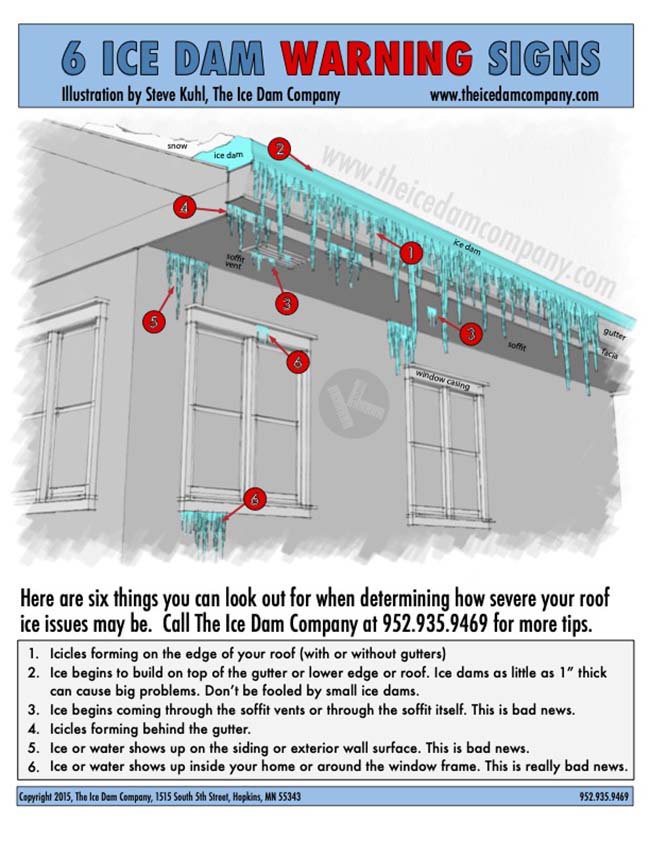
Below are some of the best techniques for removing ice dams. But keep this in mind for future winters: The key to long-term protection lies in preventing ice dams before they occur.
How to Remove Ice Dams
Once an ice dam forms, it’s essential to remove it before further thawing and freezing cause it to expand and put the roof and gutter at additional risk. The most common methods for ice dam removal include using one of the best ice melts to treat the ice or using one of the best ice dam tools to break the ice into small chunks for removal. When in doubt, it’s usually wise to enlist the help of an ice dam removal service.
Step 1: Melt the ice dam with calcium chloride.
Calcium chloride, such as Morton’s Safe-T-Power, is the same stuff used to melt and remove ice on driveways and sidewalks, but don’t just sprinkle it on the ice dam. Instead, fill tube socks or pantyhose legs with the granules and then tie off their ends with string.
A 50-pound bag of calcium chloride costs around $30 and will fill approximately 13 to 15 tube socks. By using calcium chloride in this way, homeowners can position each sock vertically over the dam—with the sock’s end hanging an inch or two over the roof edge. As it melts the ice, it will create a tube-like channel through the ice dam, which will allow additional water that melts to run safely off the roof. It’s important to note that if there is additional snow or rainfall in the days following, the channels can quickly fill back up.
A word of caution: Do not substitute rock salt for calcium chloride when trying to melt an ice dam, as sprinkling rock salt on roofs can damage shingles, and the runoff can kill bushes and foliage beneath. Homeowners will want to make sure the ice-melt product they buy contains only calcium chloride, which is safe for shingles and vegetation.
Step 2: Break existing ice dams into chunks.
Breaking an ice dam is one of the most dangerous DIY projects and is usually better left to the professionals. According to Kuhl, “It is almost impossible to break the ice dam up with a hammer, especially safely. The difference between success and failure is millimeters…You want to be very careful and not attempt to get the ice near the roof line—keep it a good half inch above the plane of the roof so that you are not causing damage,” he advises.
Breaking an ice dam is usually done in conjunction with melting the ice in some fashion, such as using calcium chloride socks as described above or with roof steaming (see below). First, a cautious homeowner or professional hire will need to clear the roof of excess snow and melt drainage channels in the dam. Then, as the ice is beginning to melt, the edges of the channels can be carefully chipped away with a mallet, such as Tekton’s 16-ounce fiberglass mallet, to widen them and hasten drainage. Never use an axe or hatchet to chop the ice, which can cause damage to the roof.
Breaking an ice dam can result in large swaths of ice crashing off the roof, breaking windows, damaging bushes, and injuring anyone below, so extreme caution must be taken. The person breaking the ice dam should do so from a vantage point on the roof, not from the ground where the heavy ice sheets can fall.
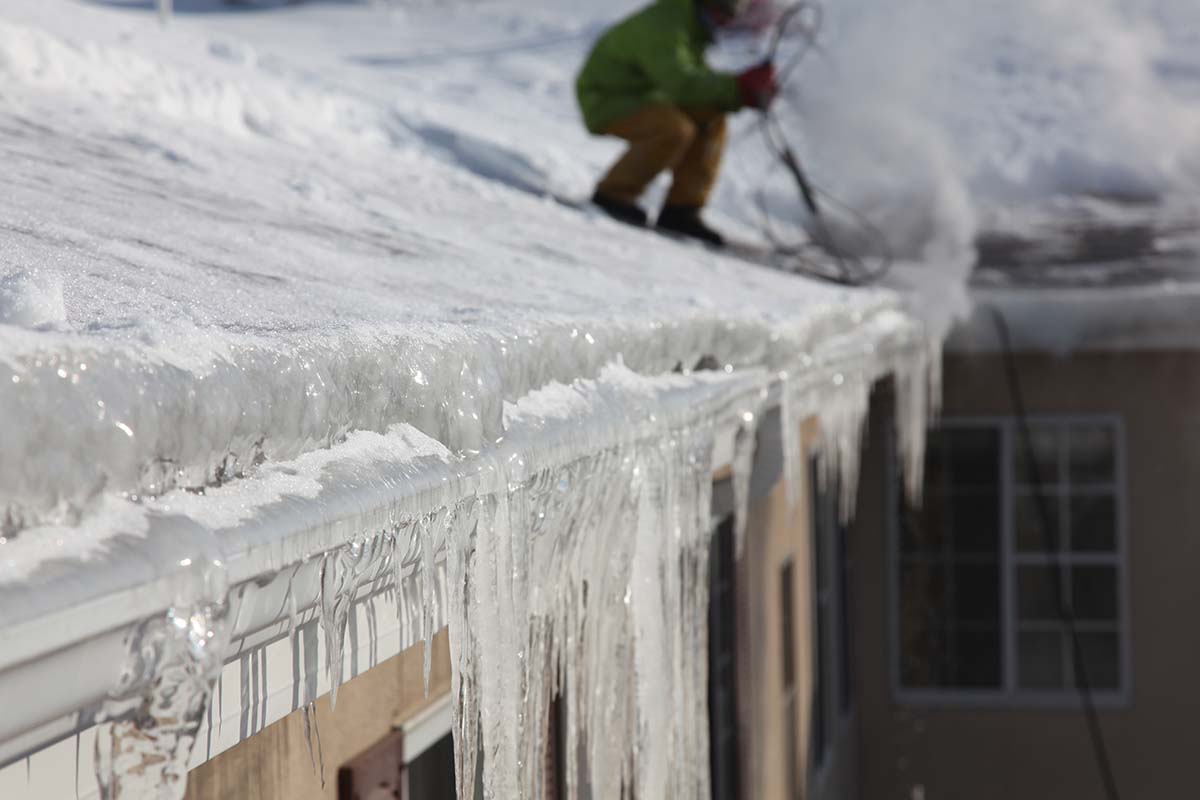
Step 3: Hire a roofing professional.
Steaming away ice dams is a task best left to one of the best roofing companies (such as Aspen Contracting or CMR Construction and Roofing) because it requires commercial steaming equipment that heats water and dispenses it under pressure. After the homeowner finds and hires a roofing contractor, the pro will first remove excess snow from the roof by shoveling and then steam channels through the ice dam to help it melt. The worker may also chip away parts of the dam until the roof is clear of ice. Professional ice dam removal costs can be relatively high; according to Kuhl, “Market rates are in the $400 to $700 per hour range nationally.” Homeowners can search for “ice dam removal near me” to get a sense of prices in their area.
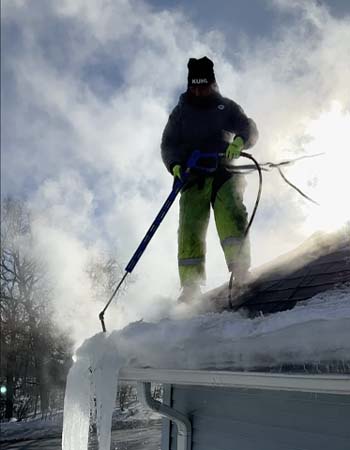
How to Prevent Ice Dams
There are many ways cold weather can damage a home—sometimes severely. Some roof ice dam prevention methods require removing snow from the roof, while others entail lowering a home’s attic temperature to prevent heat transfer from the attic to the roof. Homeowners can try one or more of the following methods of ice dam prevention to avoid getting ice dams in the first place.
Step 1: Rake excess snow from the roof after a snowfall.
While it is sometimes recommended that homeowners rake only the bottom few feet of a roof, this “can cause major problems resulting in something called a double dam—where a secondary ice dam forms higher on the roof right at the point where you cut into the snow and pull it off,” says Kuhl. Instead, he recommends raking as much snow off of the roof as can be safely reached. Because of the potentially slippery conditions, it may be best to hire one of the best snow removal services or search “snow removal near me” to find a company that takes care of this part.
For homeowners who are going the DIY route, this is best done with a lightweight roof rake such as the Snow Joe roof rake, which comes with a 21-foot extension. Immediately after a snow, when the snow is still soft, it’s important to rake the roof’s eaves clear of snow. This will help reduce ice buildup. The best roof rakes will last for years and make rooftop snow removal a snap because climbing a ladder isn’t necessary. In a pinch, homeowners can try using a DIY roof rake to remove snow from their home.
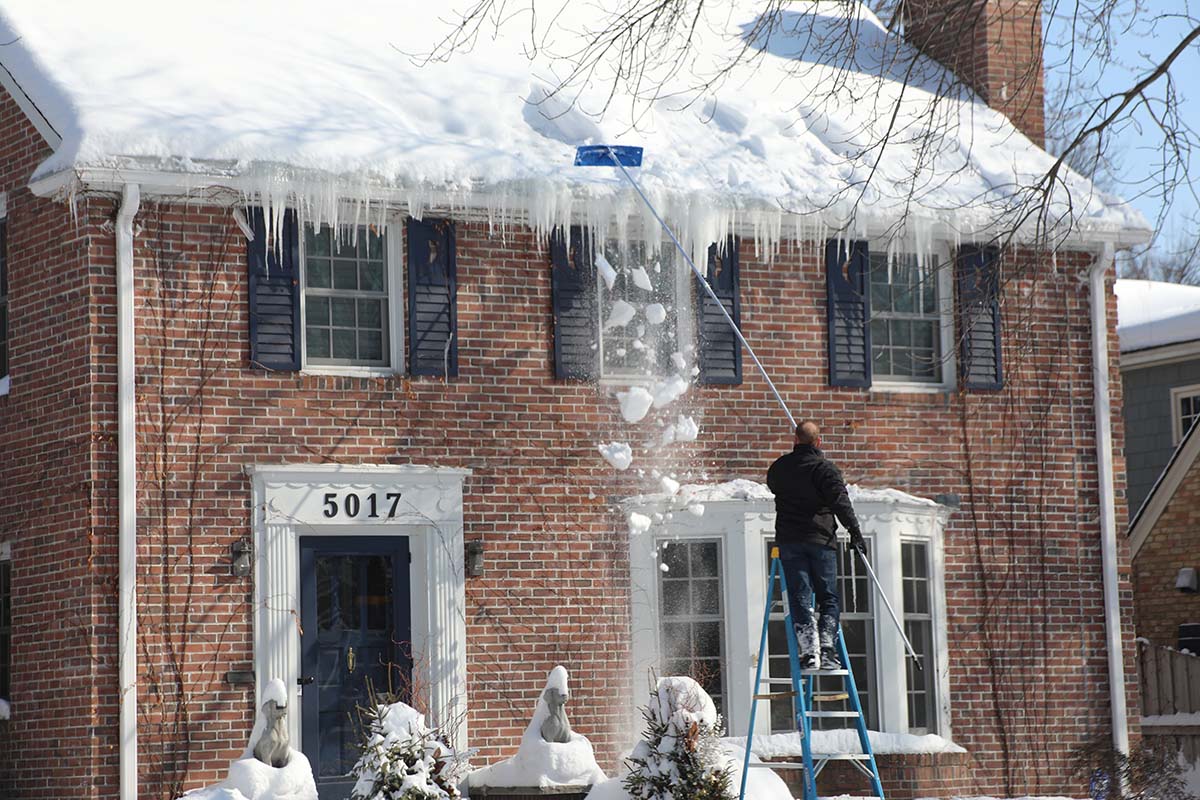
Step 2: Check for and remove attic heat sources.
When an attic’s temperature is above freezing, this can cause snow on the roof to melt and then refreeze at the lower portion of the roof. Therefore, anything that raises the temperature of the attic can be a potential cause of ice dams. These sources can include recessed lighting, exhaust vents, plumbing, or HVAC pipes. Rerouting or replacing certain elements or wrapping them in insulation can help mitigate this problem.
Step 3: Add attic insulation.
The idea is to stop the transfer of heat through the roof, which triggers the freeze-thaw cycle. An extra 8- to 10-inch layer of attic insulation will help prevent heat transfer and help retain heat inside the home, so homeowners will spend less to keep their houses warm in the winter. The best attic insulation, such as Owens Corning’s R-30 insulation, will keep heat from the living space from seeping into the attic, and in doing so will also reduce the risk of ice dam formation.
Step 4: Seal all interior airflow leaks in the attic.
No matter how much insulation is added to an attic, if warm air from the living space flows through gaps and vents, the attic will still be too warm. According to Kuhl, “The vast majority of the problem is hot air getting into places it’s not supposed to get. Sealing those air leaks is the number one thing you can do to reduce the likelihood of ice dams.” Eliminating interior airflow involves sealing all gaps around sewer vent pipes with one of the best expanding foam options and having bathroom and dryer vents rerouted from the attic through an exterior wall of the home. A quality insulating foam, such as Great Stuff Gaps & Cracks, will block hot air from flowing from the living space into the attic.
Step 5: Ventilate your attic to keep it cool.
The best roof vents should be installed along the underside of the roof eaves in the soffit, and exhaust vents should be located near the top of the roof. Cool air will naturally enter a soffit vent, such as the HG Power soffit vent. As the cool air warms in the attic, it rises and exits through an exhaust vent, such as the Master Flow solar power roof vent, which should be located near the top of the roof. This creates a constant flow of fresh air through the attic, which helps keep the roof deck from overheating.
Because roofs vary in size and configuration, developing an attic ventilation system is a job for a qualified roofing professional.
Step 6: Install self-regulating heat cables.
Heat cables, also called heat tape, are ice dam prevention products installed on parts of a roof that are most vulnerable. “The cable comes in two families: constant wattage and self-regulating,” says Kuhl. Constant wattage cables remain on at all times, whereas self-regulating cables only activate when temperatures reach 40 degree Fahrenheit or below. Kuhl recommends self-regulating cables as they are longer lasting, and constant wattage cables are prone to burning out. Self-regulating cables also use less energy and don’t need to be manually operated, so they are not dependent on residents being at home to turn them on when a storm hits.
Homeowners can find constant wattage roof and gutter de-icing cables (Frost King’s roof cable kit is a top option) at most home improvement stores for $125 to $250. They install directly on top of the shingles via clips over the eaves of the roof. These cables will work in a pinch to keep ice dams from forming, but they are visible, and if the homeowner isn’t careful, raking the roof can dislodge them. Self-regulating heat cables will typically need to be installed by a professional, but once installed they can last up to 10 years. “One thing that is nice about heat cables as opposed to architectural approaches such as air bypass, insulation, and ventilation is that…you can target prevention to the problem area. It’s good for people who don’t really have the budget for those architectural approaches,” Kuhl adds.
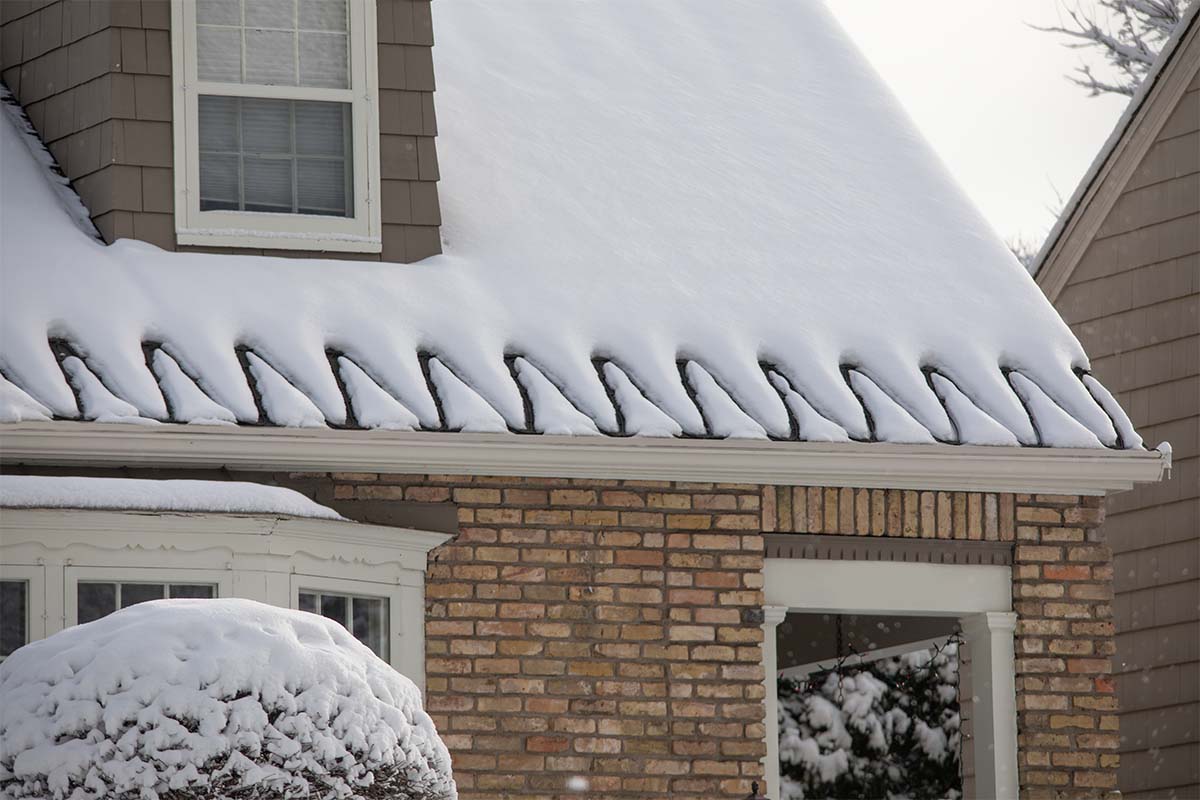
Step 7: Invest in a professionally installed de-icing system.
A professional system, such as Warmzone’s RoofHeat de-icing system, installs under the roof’s shingles and should be installed by a qualified roofing company at the same time they install new shingles on the roof. These systems will not mar the look of the roofline, and they are designed to last for years. Depending on the size of the roof, a professionally installed de-icing system could add $2,000 to $4,000 to the total roofing cost.
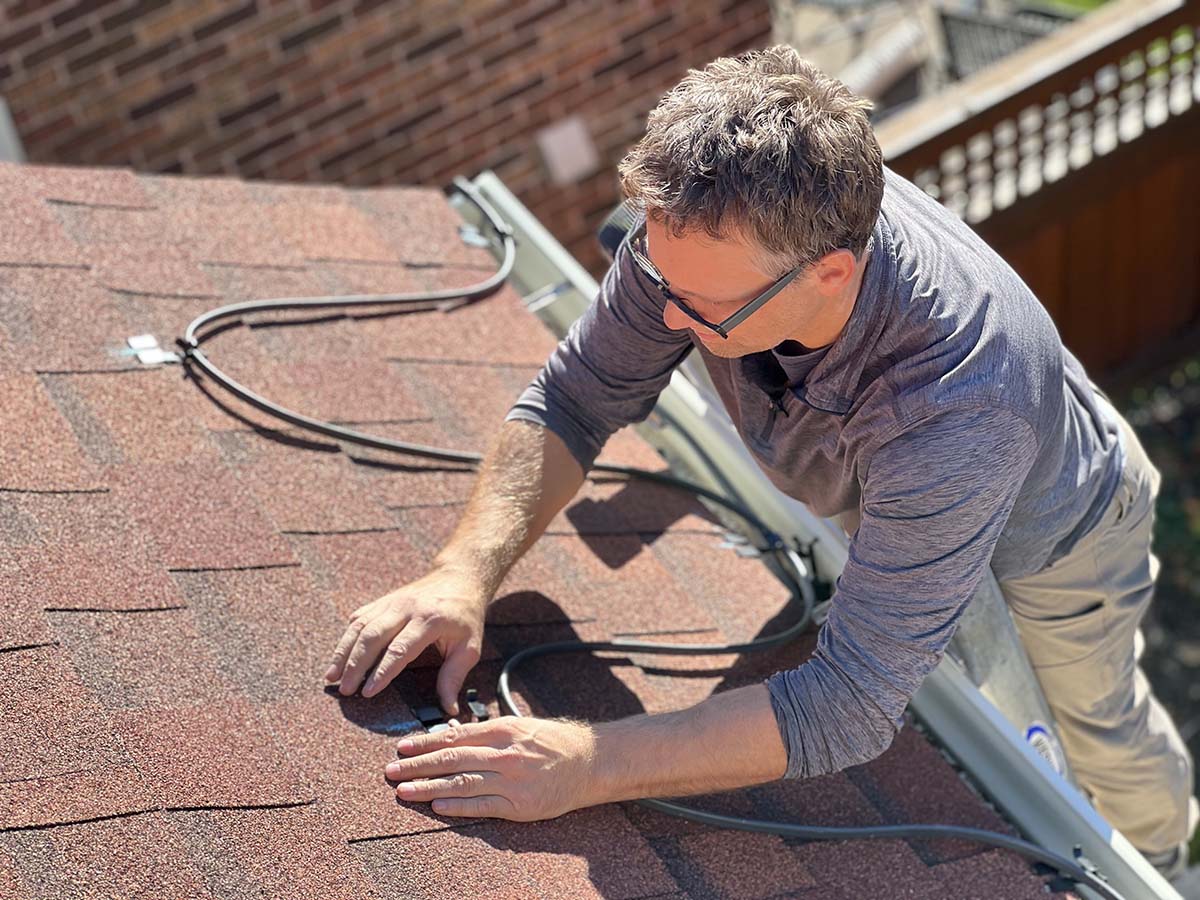
Step 8: Clear gutters in the fall after trees lose their leaves.
Many people have heard that clogged gutters can cause ice dams, but Kuhl explains that is not the case. According to Kuhl, “Gutters don’t cause ice dams. There are a whole host of problems that happen when gutters fill with ice, but [ice dams isn’t one of them]. This is a super common myth.” Instead, clogged gutters can extend the area where an ice dam forms and cause extra ice to accumulate. Gutters that fill with dead leaves and debris can keep water from draining away through the downspouts as intended. Having the gutters cleaned before winter arrives can prevent roof damage in regions that see heavy snowfall and frigid temps. A professional gutter cleaning service can help, or some of the best roof cleaning companies (such as Window Gang) offer this service. But for homeowners who choose to DIY, it’s important not to teeter precariously on a ladder and instead use one of the best gutter cleaning tools, such as the AgiiMan gutter cleaning tool, to help safely remove leaves and debris.
If neglected, ice dams can result in significant roof ice damage to a home, including ruining shingles and gutters. Because water can be forced under the shingles and leak into the house, there’s also the risk of interior water damage and mold growth. It’s important for homeowners to be prepared to remove ice dams if snow is expected to fall in the near future.
Ice dams can be melted away via the use of chemicals or steaming (or alternatively, using a method of melting ice without salt or chemicals), or they can be physically removed by breaking off small chunks at a time. These methods are most effective (and safe) when carried out by a professional. In the long run, however, the best course of action is to prevent ice dams from forming in the first place by insulating the house, venting the attic correctly, and installing self-regulating heat cables. This will help save on future snow removal costs, not to mention the cost to repair damage from ice dams. Homeowners may view the cost of having these updates done as an investment in the home’s value.

